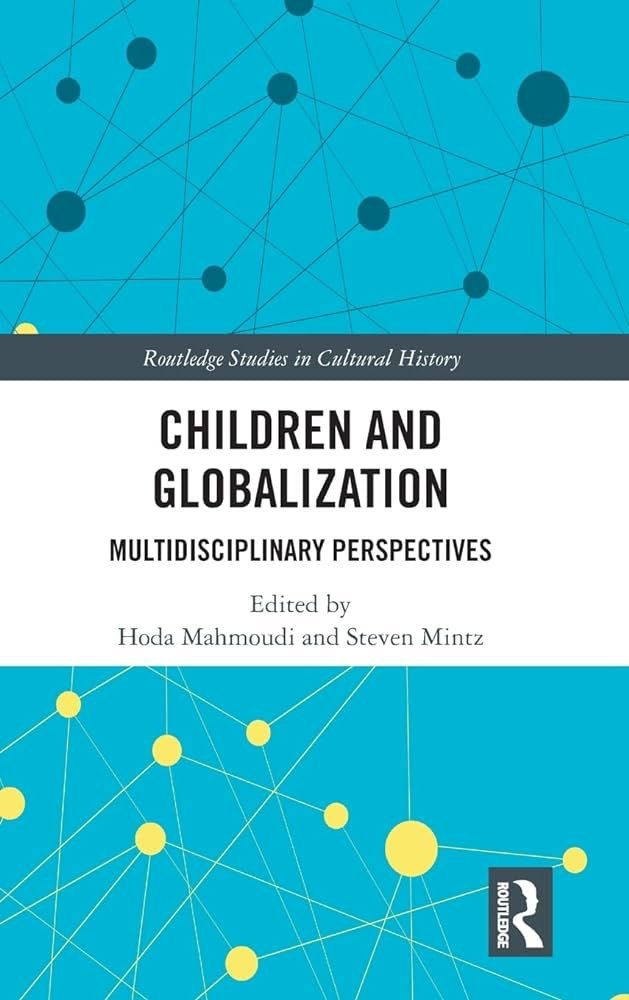Children and Globalization: Read Along Series
Children and Globalization, Multidisciplinary Perspectives
https://www.routledge.com/Children-and-Globalization-Multidisciplinary-Perspectives/Mahmoudi-Mintz/p/book/9781032093178
The impact of globalization on children's lives has been a topic of increasing interest and concern in recent years. Part I of "Children and Globalization: Multidisciplinary Perspectives" provides a comprehensive overview of the profound historical transformations in ideas about childhood, children's everyday experiences, and children's roles in society. In this blog post, we embark on the first part of our exploration “Historicizing Global Childhood”, delving into the illuminating chapters that shed light on the historical evolution of childhood.
Chapter 1, "'Modern' Childhoods: Adjustments, Variety, and Stress," by Peter N. Stearns serves as our starting point. This chapter provides an overview of the impact of globalization on children's lives, particularly in terms of the changes that have occurred in childhood over the past few centuries.
Stearns begins by discussing the basic trends that have characterized the transformation of childhood in many parts of the world, starting with the West in the late 18th century and extending to the present day. He notes that there is a common pattern to modern childhood history in many different parts of the world, but that there are also significant differences in how these changes have been implemented and experienced.
One of the key themes of the chapter is the idea that modernization has brought both gains and drawbacks for children and families. On the one hand, children have gained new rights and opportunities, and have been able to participate in sweeping changes that have transformed societies around the world. On the other hand, these changes have also brought new psychological issues, as well as new and not always benign interactions with adults.
Stearns also discusses the pressures of modern schooling and changes in family structure, which have created problems for some children in figuring out how childhood obligations relate to a meaningful adult life. He notes that premodern systems seem to have largely avoided these problems, but that modernization has brought them to the forefront.
In Chapter 2, "The New Disorders of Childhood: Historical Perspectives," by Jane E. Schultz we delve deeper into the historical context of childhood disorders. This chapter provides a historical overview of the emergence of new disorders of childhood, such as ADHD and autism, and how they have been understood and treated over time.
Schultz begins by discussing the historical context in which these disorders emerged, noting that they are largely a product of the 20th century. She notes that the emergence of these disorders is linked to broader changes in society, such as the rise of industrialization and the increasing medicalization of social problems.
One of the key themes of the chapter is the idea that the emergence of these disorders is not simply a product of scientific progress, but is also shaped by social and cultural factors. Schultz notes that the way in which these disorders are defined and diagnosed has changed over time, and that these changes are often linked to broader social and cultural trends.
Schultz also discusses the role of gender in the emergence of these disorders, noting that they are often seen as affecting boys more than girls. She notes that this is partly due to the fact that boys are more likely to exhibit certain behaviors that are associated with these disorders, but also due to broader cultural assumptions about gender and behavior.
Lastly, Chapter 3, "Outside the Lines: Black Girls and Boys Learn about the Interconnected Worlds of Slavery and Freedom in 19th-Century North America," by Wilma King discusses a detailed examination of the experiences of black children in North America during the 19th century, and how they learned about the interconnected worlds of slavery and freedom. This chapter highlights the complex and interconnected worlds of slavery and freedom that black children had to navigate, and the emotional toll that this took on their mental health.
King begins by discussing the historical context in which black children lived during this time period, noting that they faced significant challenges due to the institution of slavery and the legacy of racism. She notes that black children had to demonstrate maturity, competence, and independence at an early age, and often had to contribute to their families' well-being.
One of the key themes of the chapter is the idea that black children had to navigate complex and interconnected worlds of slavery and freedom. King also discusses the emotional costs of freeing oneself from bondage while loved ones remained enslaved, and the inroads that stressors associated with slavery and uneven opportunities for freedom made upon the mental health of black children.
Part I of "Children and Globalization: Multidisciplinary Perspectives" provides a comprehensive overview of the impact of globalization on children's lives, particularly in terms of the changes that have occurred in childhood over the past few centuries.
About the Author:
Eden is a Graduate Assistant with the Baha’i Chair for World Peace. She is attending the University of Maryland and pursuing a Master of Public Health in Health Care Management. She graduated from the University of Maryland in 2023 with a B.S. in Public Health Science. Her interests are in health disparities and policy.


